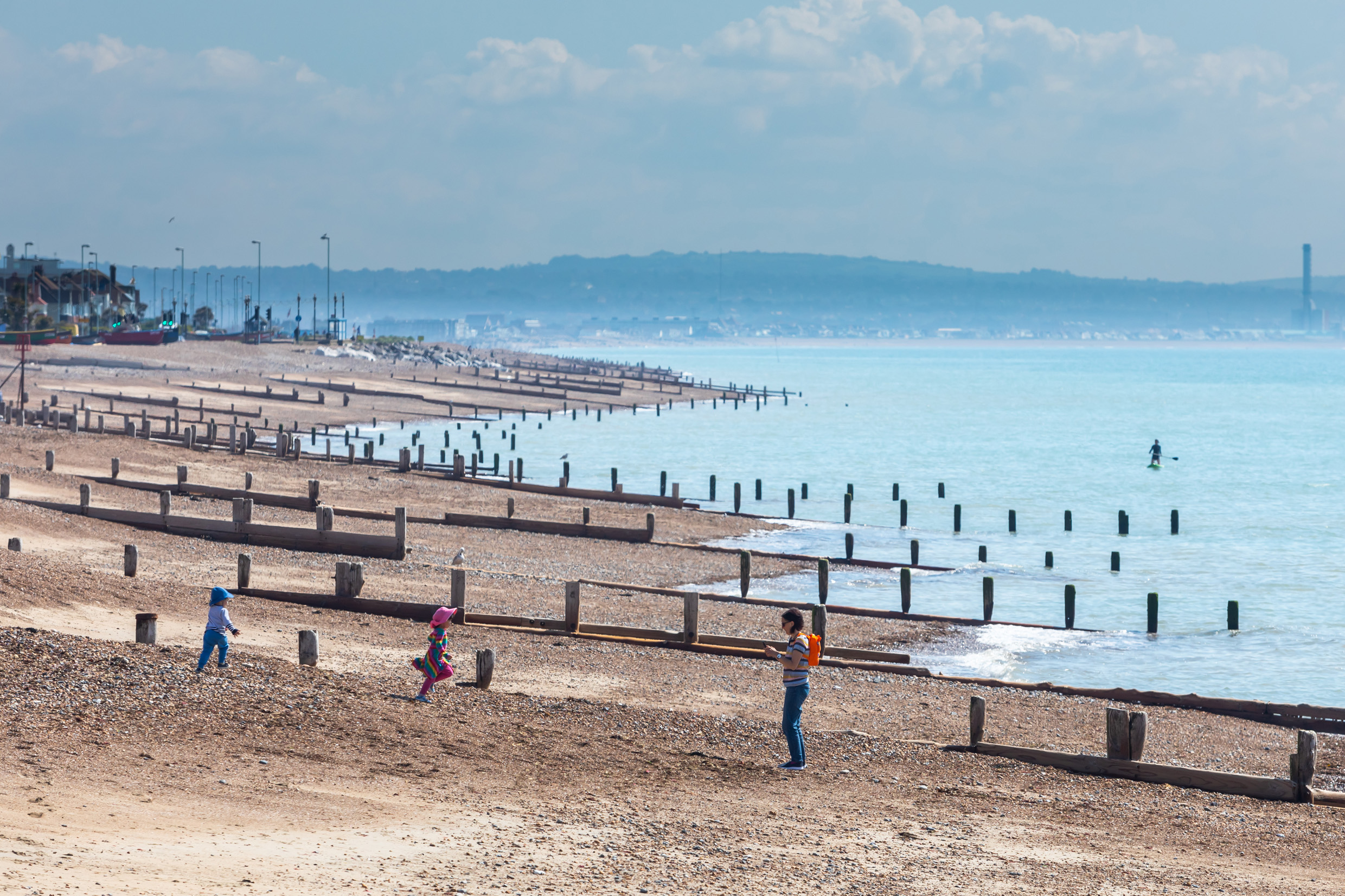
What we’re doing to improve bathing water quality
We must work with local partners to take a holistic approach to protecting the quality of our bathing waters, which is why we’ve set up a Clean Rivers and Seas Task Force to reduce rainwater run-off and our use of storm overflows.
The South East is home to 87 designated bathing waters, which customers flock to during the summer months to enjoy, whether it’s swimming, kayaking, surfing, paddle boarding or just wriggling your toes in the water.
You may have heard the term ‘bathing water season’ before – this runs from May to September and is the time of year when our coastal areas are busiest.
Bathing water ‘quality’ refers to the cleanliness and safety of it. Throughout the Summer, the Environment Agency takes samples and tests for bacteria in the water. They then publish the data, which allows the government to award a score on water quality. We’re lucky in the South East that almost all our waters are classed as ‘Good’ or ‘Excellent’.
Bathing water quality is determined by a range of factors including:
-
Unpermitted storm overflow releases from wastewater treatment works
-
Agricultural run-off
-
Seabird and animal matter
-
Marine activity, such as yachts and ships.
We must work with local partners to take a holistic approach to protecting the quality of our bathing waters, which is why we’ve set up a Clean Rivers and Seas Task Force to reduce rainwater run-off and our use of storm overflows.
What affects bathing water?
On the occasion where high levels of bacteria are found, bathing water classifications can drop, and it’s important we know where that’s happened so we can investigate the cause.
We treat the 1,350 million litres of wastewater each day so it’s natural for people to expect us to be a major contributor to poor bathing water quality. And, in previous years, this certainly was the case as wastewater hasn’t always been treated as well as it is now – pre-privatisation only 28% of the UK’s bathing waters met the Environment Agency’s (EA’s) minimum standards. A string of treatment works built along our 700 miles of coastline over the past 30 years has changed that – 99% of bathing waters now meet the EA’s standards.
We understand our customers concerns when it comes to storm releases – the UK’s long-standing system of releasing excess surface and ground water into the environment during and after prolonged rainfall to prevent sewers backing up and flooding homes and communities.
That’s why our Clean Rivers and Seas Task Force is using innovative engineering and natural solutions to reduce their use, by slowing the flow of water entering our sewers in the first place.
We’ve also set up our online Beachbuoy service which has every single storm overflow along our coastline plotted, and updates customers in real-time with any possible impact on bathing waters. This service is constantly being updated, with our panel of customers and local stakeholders advising on the updates. A new platform will be launching very soon so watch this space!
Case study: Aldwick Beach investigation
When bathing waters start to see high levels of bacteria on a regular basis, we always investigate alongside our partners in the community, such as the local authorities.
For example, at Bognor’s Aldwick beach, after investigations between the council and the Environment Agency, it was shown that storm releases were not to blame. The poor bathing water quality was being caused by illegally connected toilets and washing machines, known as misconnections. When home appliances are incorrectly plumbed, pipework can often illegally drain straight into streams and even onto the beach.
Agricultural and urban run-off have a part to play too.
The South is home to vast open landscapes and farmland. Pesticides and fertilisers often run into the sea, affecting the quality of our waters. In contrast, in built up, urban areas, rainwater running off the highway and into surface water drains often ends up running on to the beach, sweeping all sorts with it, including litter, dog mess, cigarette butts and other rubbish discarded in the street.
Beach users leaving their rubbish behind after a day at seaside can also be a problem, often causing more birds to gather on or around the beach, increasing the amount of bird mess ending up in the sea.
What’s being done?
We have one of the most ambitious plans in the water industry to reduce storm overflows, with our £1.5 billion Clean Rivers and Seas Plan, with £40 million already invested in our delivery plans and pilot Pathfinder projects to 2025.
We’re also relining over 3,000 metres of sewer pipes in towns, near beaches, as well as tracking down illegal misconnections where incorrectly plumbed extensions or garages feed into drains instead of the sewers.
However, with over 700 miles of coast to look after, it’s important to work together to improve the quality of the bathing waters we share.
